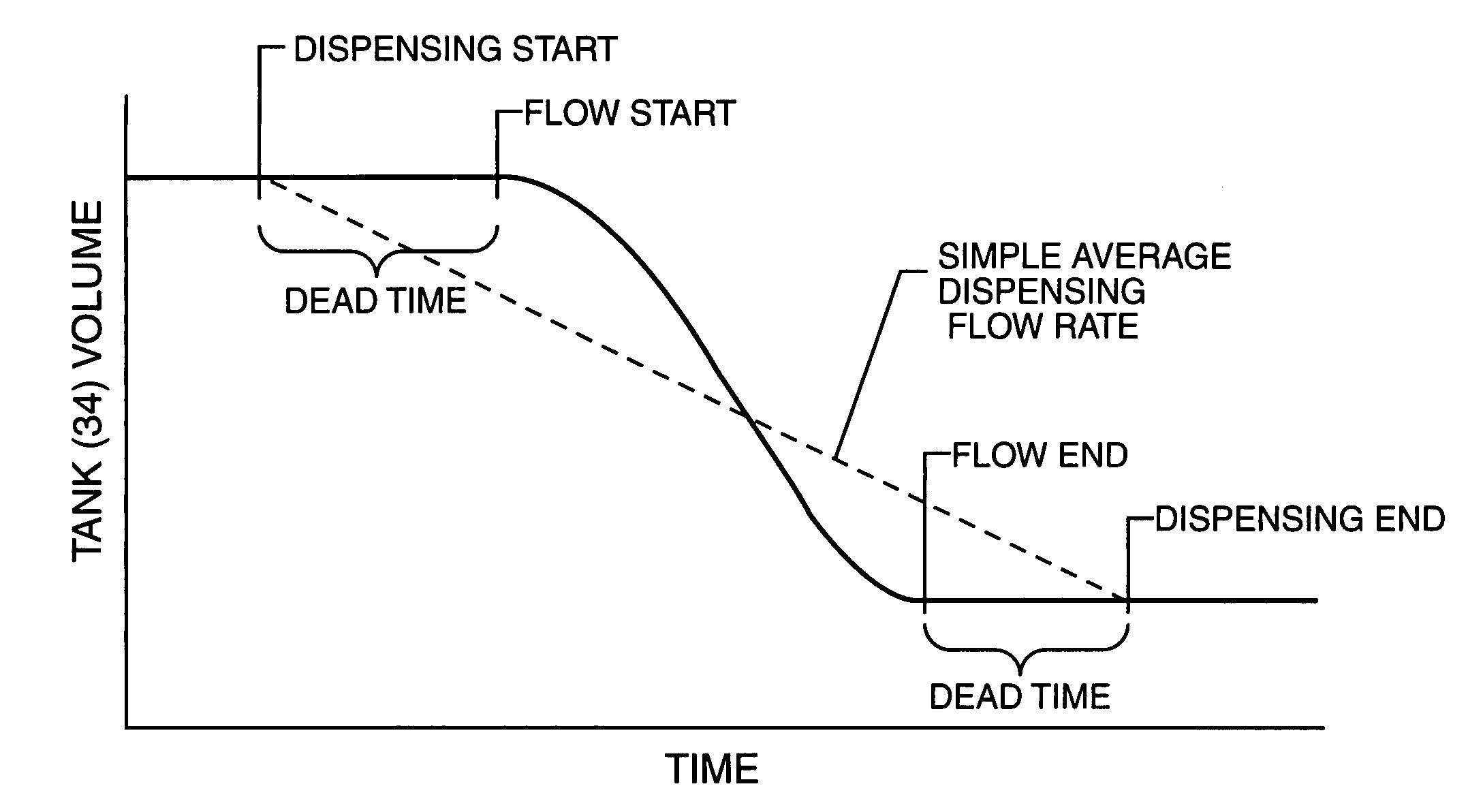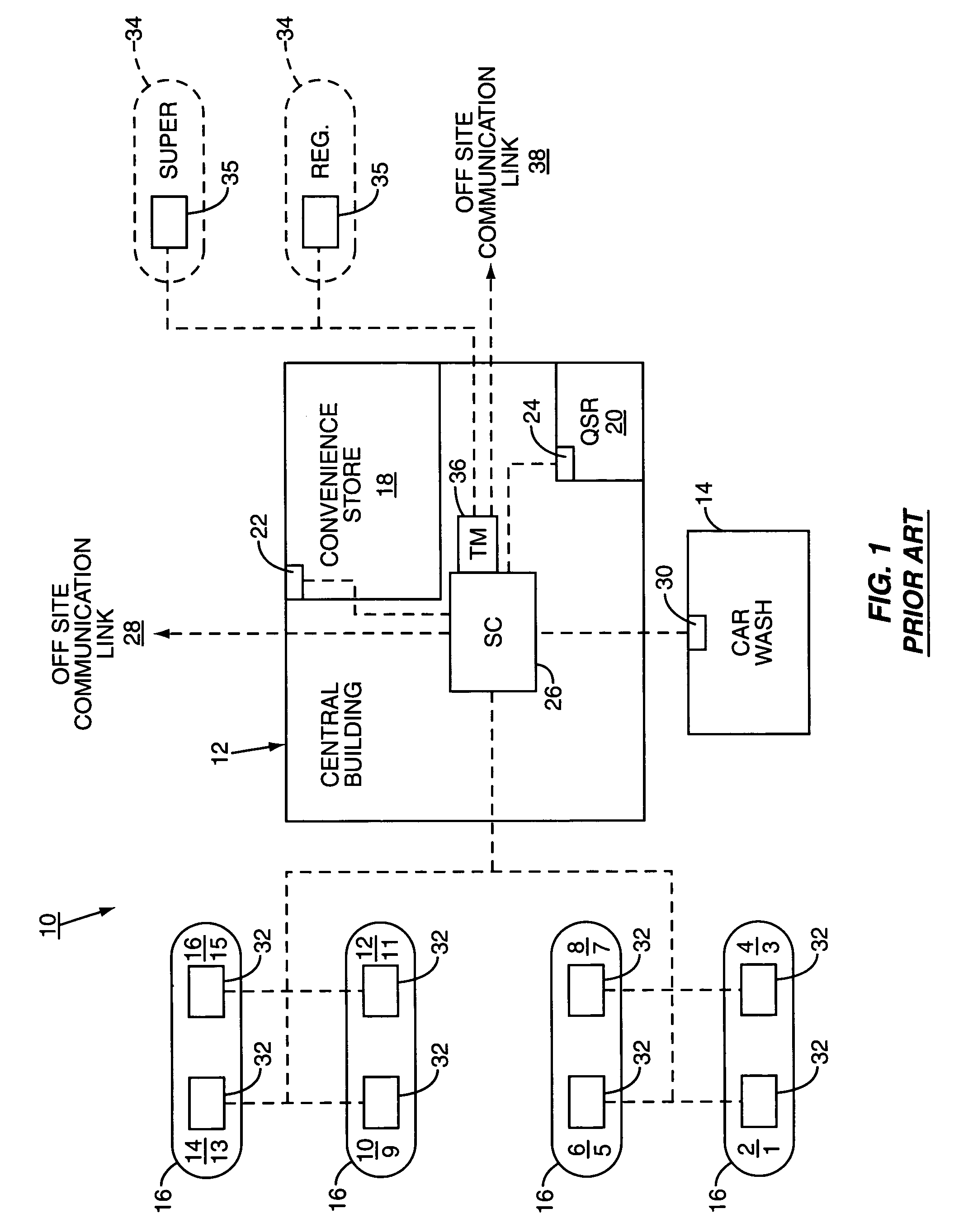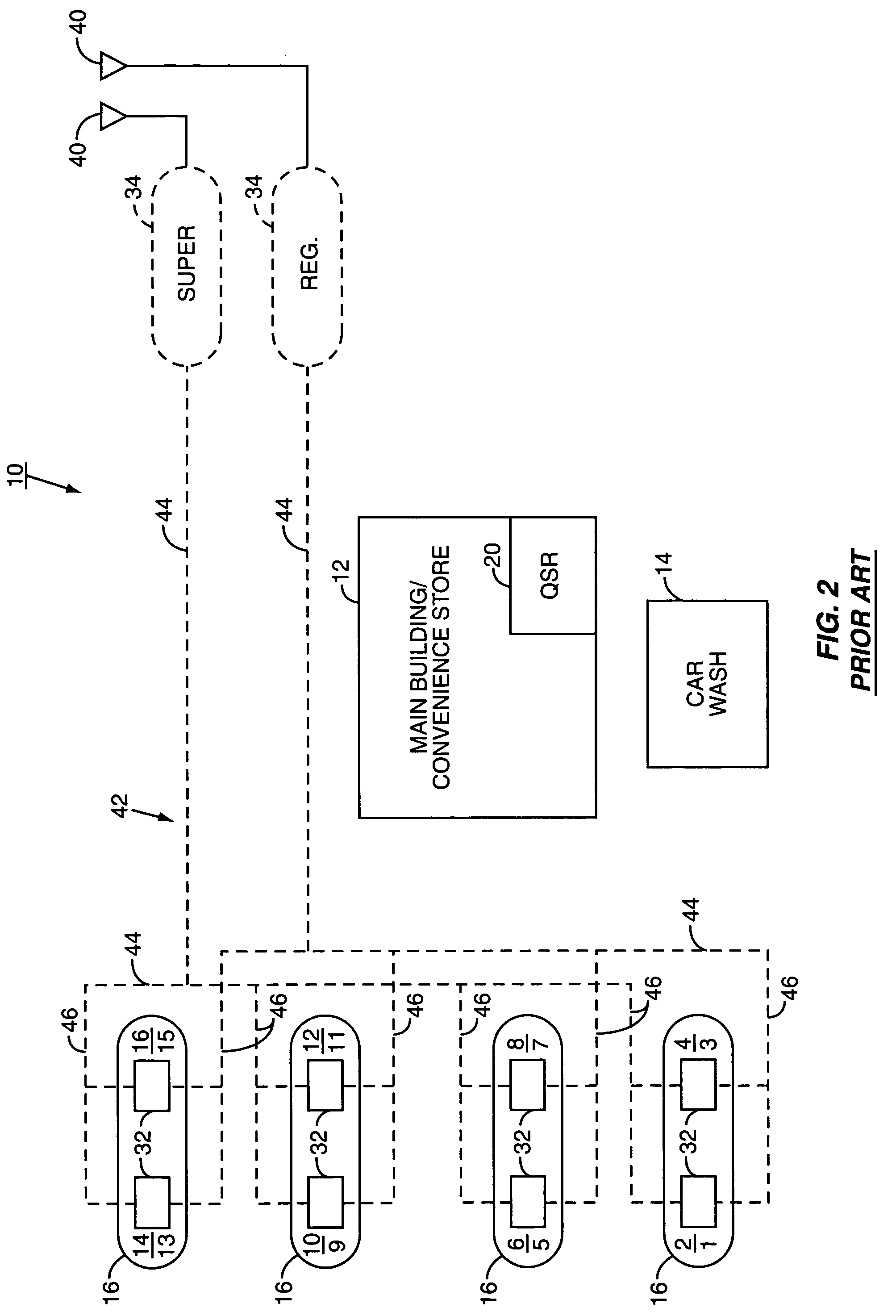Method and system for determining and monitoring dispensing point flow rates and pump flow capacities using dispensing events and tank level data
a technology of pump flow rate and event, which is applied in the direction of liquid transferring device, process and machine control, instruments, etc., can solve the problems of reducing the throughput efficiency of the fuel dispenser, not delivering the maximum throughput or flow rate of fuel, and fuel dispensers, so as to improve the accuracy of the estimated flow rate and reduce the time
- Summary
- Abstract
- Description
- Claims
- Application Information
AI Technical Summary
Benefits of technology
Problems solved by technology
Method used
Image
Examples
Embodiment Construction
[0055]The embodiments set forth below represent the necessary information to enable those skilled in the art to practice the invention and illustrate the best mode of practicing the invention. Upon reading the following description in light of the accompanying drawing figures, those skilled in the art will understand the concepts of the invention and will recognize applications of these concepts not particularly addressed herein. It should be understood that these concepts and applications fall within the scope of the disclosure and the accompanying claims.
[0056]This patent application claims priority to U.S. Provisional Patent Application No. 60 / 510,796 entitled, “Method And System For Determining And Monitoring Dispensing Point And Pump Flow Rates Using Tank Level Data,” filed on Oct. 11, 2003 and incorporated herein by reference in its entirety.
[0057]One solution to this problem is found in co-pending patent application Ser. No. 10 / 684,258, filed by the assignee of the present ap...
PUM
 Login to View More
Login to View More Abstract
Description
Claims
Application Information
 Login to View More
Login to View More - R&D
- Intellectual Property
- Life Sciences
- Materials
- Tech Scout
- Unparalleled Data Quality
- Higher Quality Content
- 60% Fewer Hallucinations
Browse by: Latest US Patents, China's latest patents, Technical Efficacy Thesaurus, Application Domain, Technology Topic, Popular Technical Reports.
© 2025 PatSnap. All rights reserved.Legal|Privacy policy|Modern Slavery Act Transparency Statement|Sitemap|About US| Contact US: help@patsnap.com



